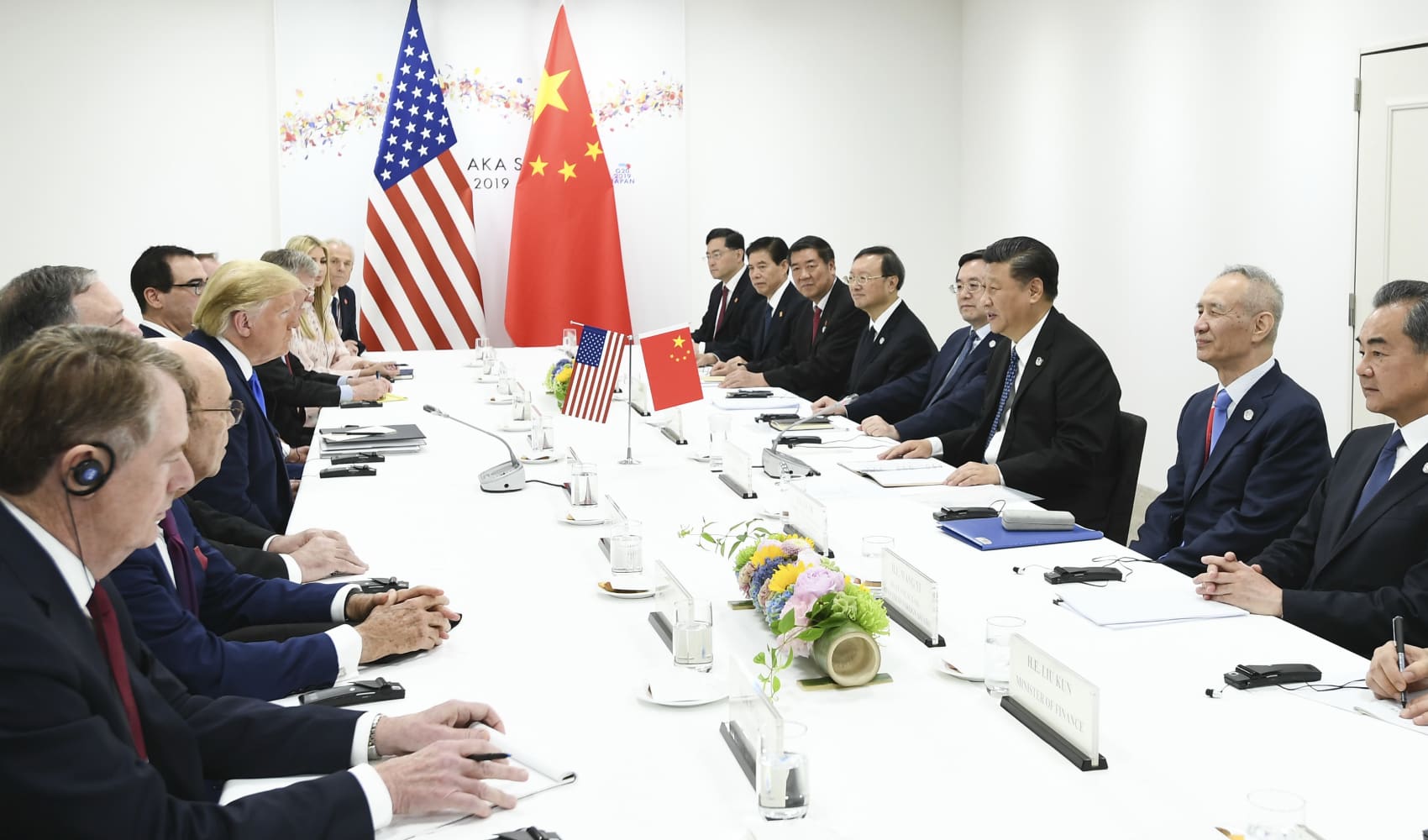EU Tariff Showdown: What's Next for US Trade?
EU Prepares Retaliation: Looming U.S. Tariff Showdown!
Introduction: The Trade Winds are Shifting
Get ready for a potentially bumpy ride on the high seas of international trade! The European Union (EU) is gearing up to announce its next moves in a long-running dispute with the United States over tariffs. Think of it like a chess game – both sides are strategizing, anticipating the other's moves, and preparing their counter-moves. The stakes are high, impacting everything from steel prices to the cost of your favorite imported goods. This isn't just about governments; it affects businesses, consumers, and the global economy as a whole.
EU's Stance: Negotiation First, But Not at Any Cost
According to European Trade Commissioner Maros Sefcovic, the EU's priority remains finding a negotiated solution with Washington. As he put it, "Negotiations clearly come first but not at any cost." This "lazer-focused approach" highlights the EU's desire for a peaceful resolution, but it also underscores their willingness to defend their interests if necessary. What does "not at any cost" really mean? It suggests that the EU has red lines and is prepared to act if those lines are crossed.
The Thursday Announcement: What to Expect
Mark your calendars for Thursday! The EU's executive arm is set to unveil further details of its proposed countermeasures to U.S. tariffs. Sefcovic announced this upcoming update on Wednesday, hinting at "next preparatory steps, both in [the] area of possible rebalancing measures and also in the areas important for further discussions." This suggests a two-pronged approach: preparing for potential retaliation while simultaneously trying to keep the lines of communication open for further negotiations.
Preparing for All Scenarios: A Prudent Approach
Sefcovic emphasized that the EU continues to "prepare for any scenario" if current trade talks fail. This proactive stance reflects a realistic assessment of the situation and a commitment to protecting the EU's interests. After all, hope for the best, but prepare for the worst, right?
Understanding the Current Trade Dispute: A Brief History
This isn't a new issue. The trade dispute between the EU and the U.S. has been simmering for years, with various disagreements over sectors like steel, aluminum, and aircraft. Understanding the history is crucial to understanding the current context. Think of it like a long-running family feud – there's a backstory that informs every interaction.
The Potential Impact of Tariffs: Who Pays the Price?
Tariffs are essentially taxes on imported goods. While they're intended to protect domestic industries, they often have unintended consequences. Higher tariffs can lead to higher prices for consumers, reduced competitiveness for businesses, and disruptions in global supply chains. Imagine your favorite imported cheese suddenly becoming significantly more expensive – that's the potential impact of tariffs in action.
Rebalancing Measures: What Could the EU Retaliate With?
Possible Target Sectors
Rebalancing measures, in this context, refer to retaliatory tariffs imposed by the EU on U.S. goods. The EU has previously targeted products like Harley-Davidson motorcycles, bourbon whiskey, and Levi's jeans – iconic American brands that are both politically sensitive and widely popular. The choice of targets is strategic, designed to exert maximum pressure on the U.S. government.
The Importance of Strategic Targeting
It’s not just about picking random products. The EU carefully selects goods to target based on factors like their political significance, their impact on U.S. industries, and the availability of alternative sources. A well-targeted tariff can be a powerful tool in trade negotiations.
Areas Important for Further Discussions: What are the Sticking Points?
Digital Taxes and Other Trade Barriers
The "areas important for further discussions" likely include ongoing disputes over digital taxes, agricultural subsidies, and other trade barriers. These are complex issues with no easy solutions, requiring both sides to be willing to compromise. Finding common ground on these issues is essential to achieving a lasting resolution.
The Search for a Mutually Beneficial Outcome
The goal of negotiations is not simply to win, but to find a solution that benefits both sides. A mutually beneficial outcome can foster stronger economic ties and reduce the risk of future trade disputes. It's about building bridges, not walls.
Geopolitical Implications: Beyond Trade
The trade relationship between the EU and the U.S. has broader geopolitical implications. It affects the balance of power in the global economy and impacts the ability of both sides to cooperate on other important issues, such as climate change, security, and international development. A strong EU-U.S. relationship is crucial for maintaining global stability.
The Role of the WTO: A Rules-Based System
The World Trade Organization (WTO) plays a critical role in resolving trade disputes and ensuring a rules-based trading system. Both the EU and the U.S. are members of the WTO and are subject to its rules. The WTO provides a forum for resolving disputes and enforcing trade agreements.
The Future of EU-U.S. Trade Relations: What Lies Ahead?
Potential Scenarios
The future of EU-U.S. trade relations remains uncertain. Several scenarios are possible, ranging from a comprehensive trade agreement to a prolonged period of trade tensions. The outcome will depend on the willingness of both sides to negotiate in good faith and find common ground.
The Importance of Diplomacy
Ultimately, diplomacy is the key to resolving trade disputes. Open communication, mutual respect, and a willingness to compromise are essential for building a stronger and more sustainable trading relationship. It's time for both sides to roll up their sleeves and get to work.
Business Implications: Preparing for the Uncertainty
For businesses operating in both the EU and the U.S., the uncertainty surrounding trade relations can be challenging. Companies need to be prepared for potential disruptions to supply chains, increased costs, and changes in market access. Diversifying supply chains, exploring alternative markets, and engaging with policymakers are all important strategies for mitigating risk.
Consumer Impact: Will Prices Rise?
Consumers are the ones who ultimately pay the price for trade wars. Increased tariffs can lead to higher prices for imported goods, reducing purchasing power and impacting household budgets. It's important for consumers to be aware of the potential impact of trade disputes on their wallets.
Conclusion: Navigating the Trade Terrain
The EU's upcoming announcement regarding its countermeasures to U.S. tariffs marks a critical moment in the ongoing trade dispute. While negotiations remain the preferred option, the EU is clearly prepared to defend its interests if necessary. The outcome will have significant implications for businesses, consumers, and the global economy. Staying informed, understanding the complexities of the situation, and advocating for constructive solutions are essential for navigating the trade terrain. The key takeaways are:
- The EU prefers a negotiated solution but is preparing countermeasures.
- The announcement on Thursday will reveal specific details of those countermeasures.
- Businesses and consumers should be aware of the potential impact on prices and supply chains.
- The overall goal should be to seek a mutually beneficial outcome for both the EU and the U.S.
Frequently Asked Questions (FAQs)
Here are some frequently asked questions to help you better understand the situation:
- What are tariffs? Tariffs are taxes imposed on imported goods. They increase the cost of those goods, making them more expensive for consumers and businesses.
- Why are the EU and the U.S. in a trade dispute? The dispute stems from disagreements over various trade issues, including steel, aluminum, aircraft, digital taxes, and agricultural subsidies.
- What are countermeasures? Countermeasures are retaliatory actions taken by a country in response to another country's unfair trade practices. In this case, the EU is considering imposing tariffs on U.S. goods.
- How will this affect consumers? Tariffs can lead to higher prices for imported goods, potentially impacting household budgets.
- What is the role of the WTO in this dispute? The WTO provides a forum for resolving trade disputes and ensuring a rules-based trading system. Both the EU and the U.S. are members of the WTO and are subject to its rules.

